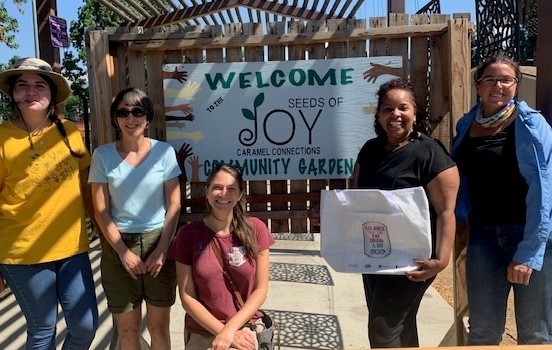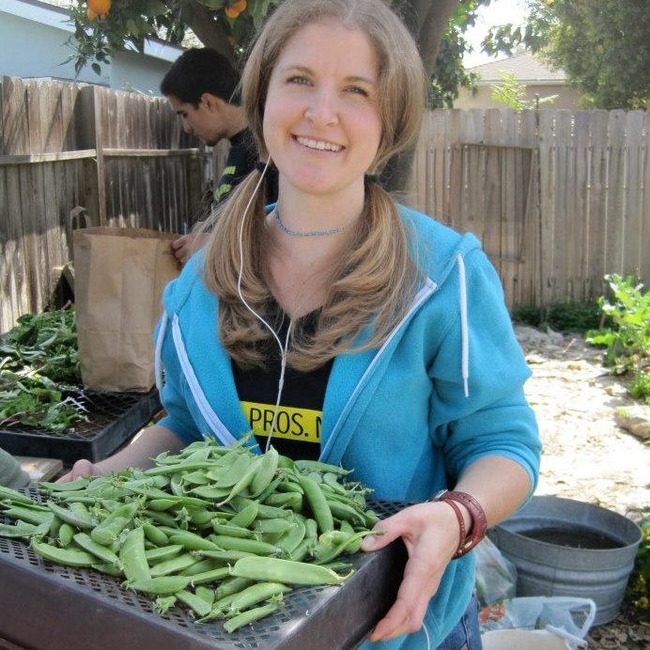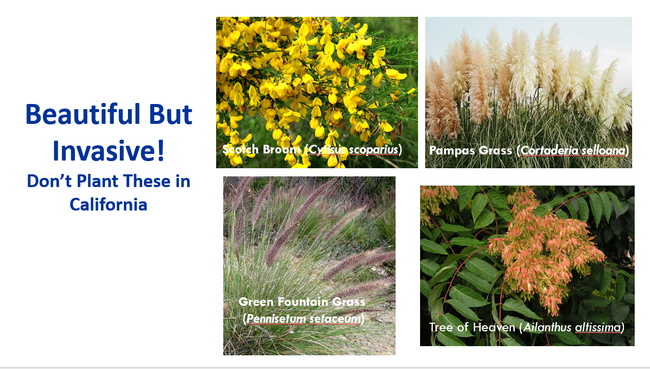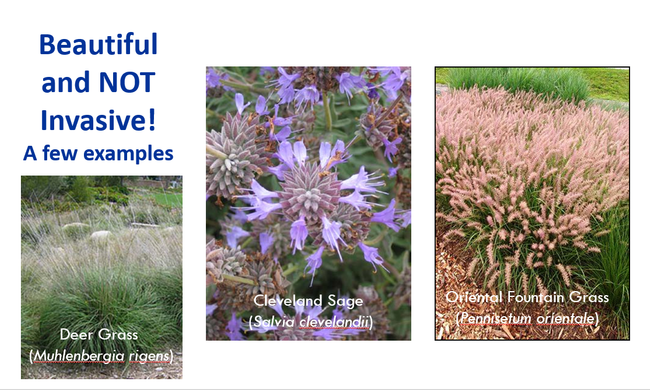Posts Tagged: horticulture
Benefits of Horticulture and Human Interactions
“To forget how to dig the earth and to tend the soil is to forget ourselves.” Mohandas K. Gandhi, World leader, political ethicist, lawyer
“Everything that slows us down and forces patience, everything that sets us back into the slow circles of nature, is a help. Gardening is an instrument of grace. ” May Sarton, Poet “
"May our heart's garden of awakening bloom with hundreds of flowers.” Thich Nhat Hanh, global spiritual leader and activist “If you have a garden and a library, you have everything you need.” Marcus Tullius Cicero, Roman philosopher
"The importance of encouraging our children in outdoor work with living plants is now recognized. It benefits the health, broadens the education, and gives a valuable training in industry and thrift. The great garden movement is sweeping over all America, and our present problem is to direct it and make it most profitable to the children in our schools and homes. — Van Evrie Kilpatrick, 1918, in “The Child's Food Garden”
As the above quotes so beautifully proclaim, interacting with nature, whether passively (viewing plants) or actively (gardening, etc.) offers many positive benefits. In fact, the link between horticulture and health and well-being has been scientifically documented for centuries. In 1812, psychiatrist, professor, and Declaration of Independence signer Dr. Benjamin Rush reported that patients participating in gardening activities had better mental health outcomes than non-gardening counterparts.
Many additional papers were published throughout the 1800's documenting benefits of active participation in gardening. More recently, positive links between simply viewing plants through a window or even on a television, movie, or exercise apparatus screen have been reported in peer-review journals. A groundbreaking study in this area was published in 1984 by environmental psychologist Robert Ulrich (Ulrich, 1984) who compared post-operative patients recovering from gall bladder surgery who had views of landscape plants to recovering patients who had the same surgery in the same facility with views of a brick wall. Patients with landscape views had fewer surgical complications, shorter hospital stays, required fewer analgesics, had better moods, and even fewer derogatory remarks by medical staff in their daily records.
Since 1984, dozens of other studies have documented similar positive outcomes resulting from both passive and active engagement with nature and plants. These include improved physical, mental and emotional health; environmental benefits; and community and societal benefits. Recent literature reviews that summarize these findings include:
- An overview of 77 peer-reviewed journal articles (Howarth, et. al., 2020) identified 35 positive outcomes linking physical and mental health and well-being to active and passive horticultural interactions. doi: https://10.1136/bmjopen-2020-036923
-A meta-analysis (Soga, 2016) of 22 studies identified several positive mental health outcomes related to gardening including mood, group cohesiveness, cooperation, pride, well-being, and more. https://doi.org/10.1016/j.pmedr.2016.11.007 -
An overview of 45 peer-review studies (Shepley, et. al., 2019) identified links between properly designed and maintained urban green spaces and crime, gun violence, and the overall safety and cohesiveness of low-wealth urban neighborhoods. https://doi.org/10.3390/ijerph16245119
- A review of 120 papers (Crus-Piedrahita, et. al., 2020) reported public health benefits from urban horticulture activities in the global North. Thirty-two papers had a specific focus on social cohesion and/or social capital. https://doi:10.1016/j.glt.2020.10.001
-Alizadeh (2019) synthesized research regarding the environmental benefits of urban plants, highlighting their vital roles in combating climate change, cooling urban heat islands, providing habitat, removing air and water pollutants, enhancing soil health, and more. https://www.researchgate.net/deref/https%3A%2F%2Fdoi.org%2F10.1108%2FIJCCSM-10-2017-0179
Enjoy your garden! Enjoy a day in nature.
Invasive Plants: Don't Encourage 'Bad Neighbors'
What do ice cream, potato chips, Scotch and Spanish Broom, and Tree of Heaven have in common? While they're all tempting to indulge in, less is more. In fact, plants such as Scotch, Spanish Broom, Tree of Heaven, Pampas Grass, Green Fountain Grass, and dozens of plants are all considered invasive plants in California. Simply put, they should not be planted. There are some great alternative plants that are better choices listed at the end of this blog.
Truth be told, I admit to falling madly in love with the Spanish Broom (Spartium junceum) shrubs adorning Highway 18 on my drive from San Bernardino to Lake Arrowhead in early spring 1984 right after my job interview for my current position. Being a “wet behind the ears” recently hatched graduate student from the Midwest I was truly in awe of their lovely yellow blooms and vowed to plant one if I got the chance to move to California. Fortunately, I found out very soon that, while the plantings were made on purpose, they were a mistake and needed to be removed due to their invasive nature.
While they were ‘recruited' from Europe and had what seemed like a perfect resumé (fast growth, lovely yellow flowers, adaptability to poor infertile soil and disease and insect-resistance), they didn't play well with others, a fatal flaw. In California, they were aggressive and crowded out native plantings. Fires only exacerbated the situation. After the 2003 burns, the Spanish Broom populations exploded, obliterating any remaining natives and taking an even larger area hostage. In summer 2010, the San Bernardino National Forest removed the plants in a costly but necessary $500,000 project under a partnership with the American Recovery and Reinvestment Act. Constant monitoring continues in the San Bernardino Mountains and other areas of the state to prevent its reestablishment which is challenging due to its ability to quickly resprout, seed longevity, and effective dispersal. It has definitely earned its ‘noxious weed' label!
This is just one example of the problems posed by invasive plants. In effect, they grow too well! They outcompete desirable plants in our gardens, lawns, and other urban and natural areas for water, nutrients, and space. They also shade sun-requiring plants. Threatened and endangered plant species and other California native plants are particularly vulnerable to their encroachment. (In most cases, invasive plants are non-native species.) Interestingly, our beloved state flower, the California poppy, is an invasive plant in New Zealand, Hawaii and other locations outside of California.
As urban gardeners, we can all greatly reduce the impact of the encroachment of invasive plants in our urban environments. Please don't plant invasive sane remove plantings on your property to stop their spread. Below are some great resources to learn more about invasive plants and find viable replacements:
California Invasive Plant Council: https://www.cal-ipc.org/
Don't Plant a Pest: https://www.cal-ipc.org/solutions/prevention/landscaping/dpp/
Invasive Plants of Southern California:https://www.cal-ipc.org/solutions/prevention/landscaping/dpp/?region=socal
PlantRight: https://plantright.org/about-invasive-plants/plant
Register Today for the Dec. 11, 2013 Turf and Landscape Institute in Rancho Cucamonga, CA
Register today for the December 11, 2013 Turf and Landscape Institute at the Etiwanda Gardens Conference Center in Rancho Cucamonga, California. This is the largest University of California Cooperative Extension educational event offered annually in Southern California and is open to all arborists, landscapers, irrigation professionals, and other 'green industry' personnel interested in receiving objective timely information on topics covering arboriculture, and sustainable landscaping, and we even have a session in Spanish stressing irrigation management practices and principles.
Questions? jshartin@ucdavis.edu, 951.313.2023
Choose from Three All-Day Educational Sessions:
- Sustainable Landscape Management
- Arboriculture
- IPM/Irrigation Fundamentals (in Spanish)
---------------------------------------------------------------------------------------
To Register online and View the Entire Program: http://cesanbernardino.ucdavis.edu
($75 each when 3 or more register together before or on Dec. 6 or $85 for a single registration)
To host a table-top trade show booth, contact Janet Hartin at jshartin@ucdavis.edu or 951.313.2023. Booths are $250 and includes 2 entrances into conference.
2012 Turf and Landscape brochure[1][1]









